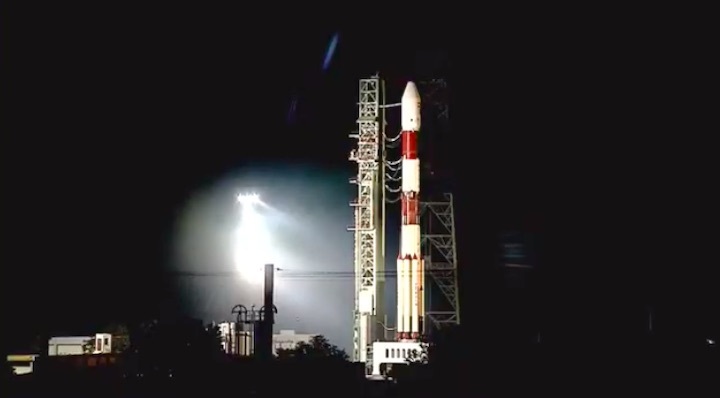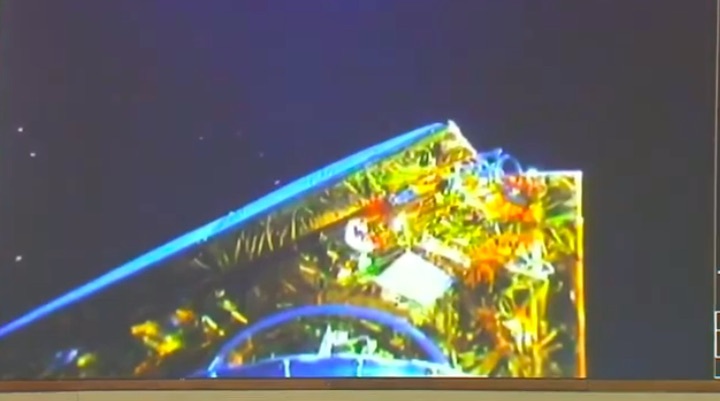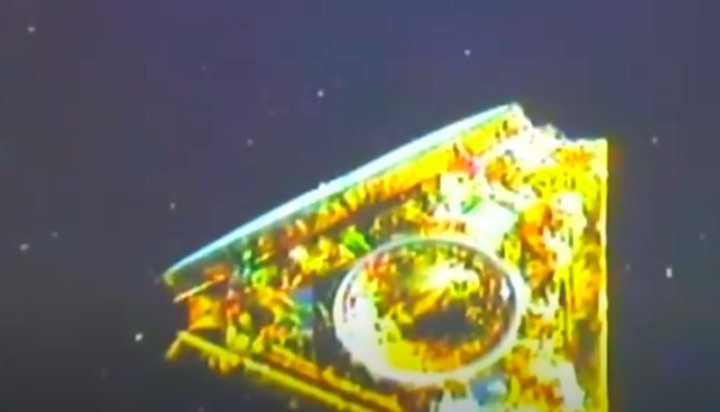The Indian Space Research Organisation’s first launch mission of 2022 is slated for February 14, with PSLV-C52 orbiting an earth observation satellite (EOS-04).
The launch of Polar Satellite Launch Vehicle (PSLV-C52) is scheduled at 05:59 hours on Monday from the First Launch Pad of Satish Dhawan Space Centre, Sriharikota, the Bengaluru-headquartered space agency said.
PSLV-C52 is designed to orbit the EOS-04, weighing 1710 kg, into a sun synchronous polar orbit of 529 km, ISRO said in an update. PSLV-C52 mission will also carry two small satellites as co-passengers. They are: student satellite (INSPIREsat-1) from Indian Institute of Space Science & Technology (IIST) in association with Laboratory of Atmospheric & Space Physics at University of Colorado, Boulder, and a technology demonstrator satellite (INS-2TD) from ISRO, which is a precursor to India-Bhutan Joint Satellite (INS-2B).
EOS-04 is a Radar Imaging Satellite designed to provide high quality images under all weather conditions for applications such as agriculture, forestry & plantations, soil moisture & hydrology and flood mapping.
“The countdown process of 25 hours and 30 minutes leading to the launch would commence at 04:29 hours on February 13, 2022 after authorisation by the Launch Authorization Board,” the ISRO said.
Meanwhile, ISRO said INSAT-4B has undergone post mission disposal (PMD) at the end of its life, followed by decommissioning on 24 January 2022, to comply with the UN and the Inter Agency Space Debris Coordination Committee-recommended space debris mitigation guidelines.
INSAT-4B is the 21st Indian GEO satellite to undergo post-mission disposal, and the required propellant for such re-orbiting was included in the initial fuel budget as a part of standard practice followed in ISRO’s GEO mission planning.
“The finally achieved orbit is about 340 km above GEO altitude in perfect compliance with IADC guidelines for space debris mitigation of GEO objects”, ISRO said. The successful post-mission disposal of INSAT-4B through meticulous planning and flawless execution marks yet another endeavour by ISRO to ensure the safety and sustainability of outer space operations, the space agency added.
Quelle: Financial Express
----
Update: 13.02.2022
.
Indian PSLV prepared for first launch in nearly a year

An Indian Polar Satellite Launch Vehicle is preparing to soar into orbit Sunday with an Indian radar imaging satellite and two rideshare payloads, including one built in the United States in partnership with science institutes in India, Singapore, and Taiwan.
The nearly 146-foot-tall (44.4-meter) launch vehicle is poised to take off at 7:29 p.m. EST Sunday (0029 GMT Monday) with India’s EOS 4 Earth observation satellite.
The PSLV is stacked for liftoff from the Satish Dhawan Space Center on India’s east coast. Located on Sriharikota Island north of Chennai, the spaceport is India’s primary launch site. Launch from the Indian space base is set for 5:59 a.m. local time Monday, about a half-hour before sunrise.
The launch will mark the first flight of a PSLV since last February, a slowdown in India’s launch cadence partially blamed on impacts from the COVID-19 pandemic. India has launched 53 PSLV missions since 1993, flying as many six times in a single year after finding a niche in the international launch market to deliver small and medium-size satellites into orbit.
But India has launched just three PSLV flights in the last two years. The pandemic forced India’s space agency to pause launch preparations, and many of the kinds of satellites once launched by the PSLV have moved to other rockets, primarily SpaceX’s Falcon 9 and emerging launchers from companies like Rocket Lab.
India’s PSLV is capable of delivering more than 3,850 pounds (1,750 kilograms) of payload to a 386-mile-high (622-kilometer) polar orbit, placing its lift capability above that of most of the commercial small launch companies, but well below SpaceX’s Falcon 9.
The launch will also be the first orbital mission from India since the failure of the country’s more powerful GSLV Mk.2 rocket in August. A technical problem with the rocket’s third stage prevented it from reaching orbit with an Indian Earth observation satellite.
The PSLV flight Sunday will launch the 3,770-pound (1,710-kilogram) EOS 4 radar satellite into a polar orbit at an altitude of 328 miles (529 kilometers), according to a mission press kit released by the Indian Space Research Organization.

Two secondary payloads will be along for the ride: The 39-pound (17.5-kilogram) INS 2TD Earth-imaging and technology demonstration microsatellite and the 18-pound (8.1-kilogram) INSPIRESat 1 spacecraft.
India’s PSLV will fly in its most powerful configuration, called the PSLV XL, with six strap-on solid rocket boosters. The boosters and core stage motor, also burning pre-packed solid propellants, will generate around 1.7 million pounds of thrust to send the rocket downrange over the Bay of Bengal.
The rocket’s liquid-fueled second stage, a solid-fueled third stage, and a fourth stage will guide the three satellites into orbit, steering the rocket southeast, then south to avoid flying over Sri Lanka.
The PSLV will deploy the EOS 4 spacecraft nearly 18 minutes after liftoff. About a minute later, the rocket will release its two rideshare payloads.
The EOS 4 satellite, formerly named RISAT 1A, will begin a 10-year mission surveying the planet with a radar imager. The spacecraft will unfurl its solar panels and C-band radar antenna shortly after separating from the PSLV’s fourth stage.
According to ISRO, the EOS 4 satellite will collect imagery for use in agriculture, forestry, flood control, soil moisture, and hydrology applications. Radar remote sensing satellites can see Earth’s surface in day and night, and aren’t obscured by cloud over like optical imaging missions.

The INS 2TD satellite carries a thermal imaging camera for Earth observations, serving as a technology demonstrator for a future satellite India is developing in cooperation with Bhutan.
INSPIRESat 1 is a joint project between the University of Colorado’s Laboratory for Atmospheric and Space Physics and the Indian Institute of Space Science and Technology, with additional contributions from institutions in Singapore and Taiwan.
It host a scientific instrument to study the dynamics of Earth’s ionosphere, a layer of the upper atmosphere where the influences of terrestrial weather and space weather come together, impacting satellite operations and radio communications.
Another instrument on INSPIRESat 1 is an X-ray spectrometer funded by NASA to observe solar flares.
The INSPIRESat 1 spacecraft was assembled and tested in Colorado and shipped to India to prepare for launch.
Quelle: SN
+++
ISRO's first satellite mission of 2022, Countdown begins for PSLV-C52 to launch Risat-1A on Valentine's Day

The Indian Space Research Organisation will launch PSLV-C52 orbiting an earth observation satellite on February 14 at 5.59am, the countdown of which began on Sunday morning.
The launch of Polar Satellite Launch Vehicle, PSLV-C52 is scheduled at 05:59 hours on February 14, 2022 from the First Launch Pad of Satish Dhawan Space Centre, Sriharikota.
PSLV-C52 is designed to orbit an earth observation satellite (EOS-04), weighing 1710 kg into a sun synchronous polar orbit of 529 km. EOS-04
PSLV-C52 mission will also carry two small satellites as co-passengers which includes one student satellite (INSPIREsat-1) from Indian Institute of Space Science & Technology (IIST) in association with Laboratory of Atmospheric & Space Physics at University of Colorado, Boulder and a technology demonstrator satellite (INS-2TD) from ISRO, which is a precursor to India-Bhutan Joint Satellite (INS-2B).
EOS-04 is a Radar Imaging Satellite designed to provide high quality images under all weather conditions for applications such as Agriculture, Forestry & Plantations, Soil Moisture & Hydrology and Flood mapping.
The countdown process of 25 hours and 30 minutes leading to the launch began at 04:29 hours on February 13, 2022 after authorization by the Launch Authorization Board.
The launch will be live telecast on Isro's official YouTube channel.
Quelle: oneindia
+++
PSLV-C52/EOS-04 Mission

The launch of Polar Satellite Launch Vehicle, PSLV-C52 is scheduled at 05:59 hours on February 14, 2022 from the First Launch Pad of Satish Dhawan Space Centre, Sriharikota.
PSLV-C52 is designed to orbit an earth observation satellite (EOS-04), weighing 1710 kg into a sun synchronous polar orbit of 529 km. 
EOS-04 is a Radar Imaging Satellite designed to provide high quality images under all weather conditions for applications such as Agriculture, Forestry & Plantations, Soil Moisture & Hydrology and Flood mapping.
Watch Live launch of PSLV-C52/EOS-04 on February 14, 2022 from 05:30 hrs IST onwards
Quelle: ISRO
----
Update: 14.02.2022
.
Erfolgreicher Start von ISRO PSLV-C52 Mission




















































Quelle: ISRO

